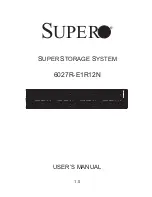
Rev. 1.50
1�4
����st ��� �01�
Rev. 1.50
1�5
����st ��� �01�
HT66F0175/HT66F0185
A/D Flash MCU with EEPROM
HT66F0175/HT66F0185
A/D Flash MCU with EEPROM
LVD Interrupt
The Low Voltage Detector Interrupt is contained within the Multi-function Interrupt. An LVD
Interrupt request will take place when the LVD Interrupt request flag, LVF, is set, which occurs
when the Low Voltage Detector function detects a low power supply voltage. To allow the program
to branch to its respective interrupt vector address, the global interrupt enable bit, EMI, Low Voltage
Interrupt enable bit, LVE, and associated Multi-function interrupt enable bit, must first be set. When
the interrupt is enabled, the stack is not full and a low voltage condition occurs, a subroutine call to
the Multi-function Interrupt vector, will take place. When the Low Voltage Interrupt is serviced, the
EMI bit will be automatically cleared to disable other interrupts. However, only the Multi-function
interrupt request flag will be also automatically cleared. As the LVF flag will not be automatically
cleared, it has to be cleared by the application program.
EEPROM Interrupt
The EEPROM Write Interrupt is contained within the Multi-function Interrupt. An EEPROM
Write Interrupt request will take place when the EEPROM Write Interrupt request flag, DEF, is set,
which occurs when an EEPROM Write cycle ends. To allow the program to branch to its respective
interrupt vector address, the global interrupt enable bit, EMI, EEPROM Write Interrupt enable bit,
DEE, and associated Multi-function interrupt enable bit must first be set. When the interrupt is
enabled, the stack is not full and an EEPROM Write cycle ends, a subroutine call to the respective
Multi-function Interrupt vector will take place. When the EEPROM Write Interrupt is serviced, the
EMI bit will be automatically cleared to disable other interrupts. However, only the Multi-function
interrupt request flag will be automatically cleared. As the DEF flag will not be automatically
cleared, it has to be cleared by the application program.
TM Interrupt
The Compact, Standard and Periodic TMs have two interrupts, one comes from the comparator A
match situation and the other comes from the comparator P match situation. All of the TM interrupts
are contained within the Multi-function Interrupts. For all of the TM types there are two interrupt
request flags and two enable control bits. A TM interrupt request will take place when any of the
TM request flags are set, a situation which occurs when a TM comparator P or A match situation
happens.
To allow the program to branch to its respective interrupt vector address, the global interrupt enable
bit, EMI, respective TM Interrupt enable bit, and relevant Multi-function Interrupt enable bit, MFnE,
must first be set. When the interrupt is enabled, the stack is not full and a TM comparator match
situation occurs, a subroutine call to the relevant Multi-function Interrupt vector locations, will take
place. When the TM interrupt is serviced, the EMI bit will be automatically cleared to disable other
interrupts. However, only the related MFnF flag will be automatically cleared. As the TM interrupt
request flags will not be automatically cleared, they have to be cleared by the application program.
















































